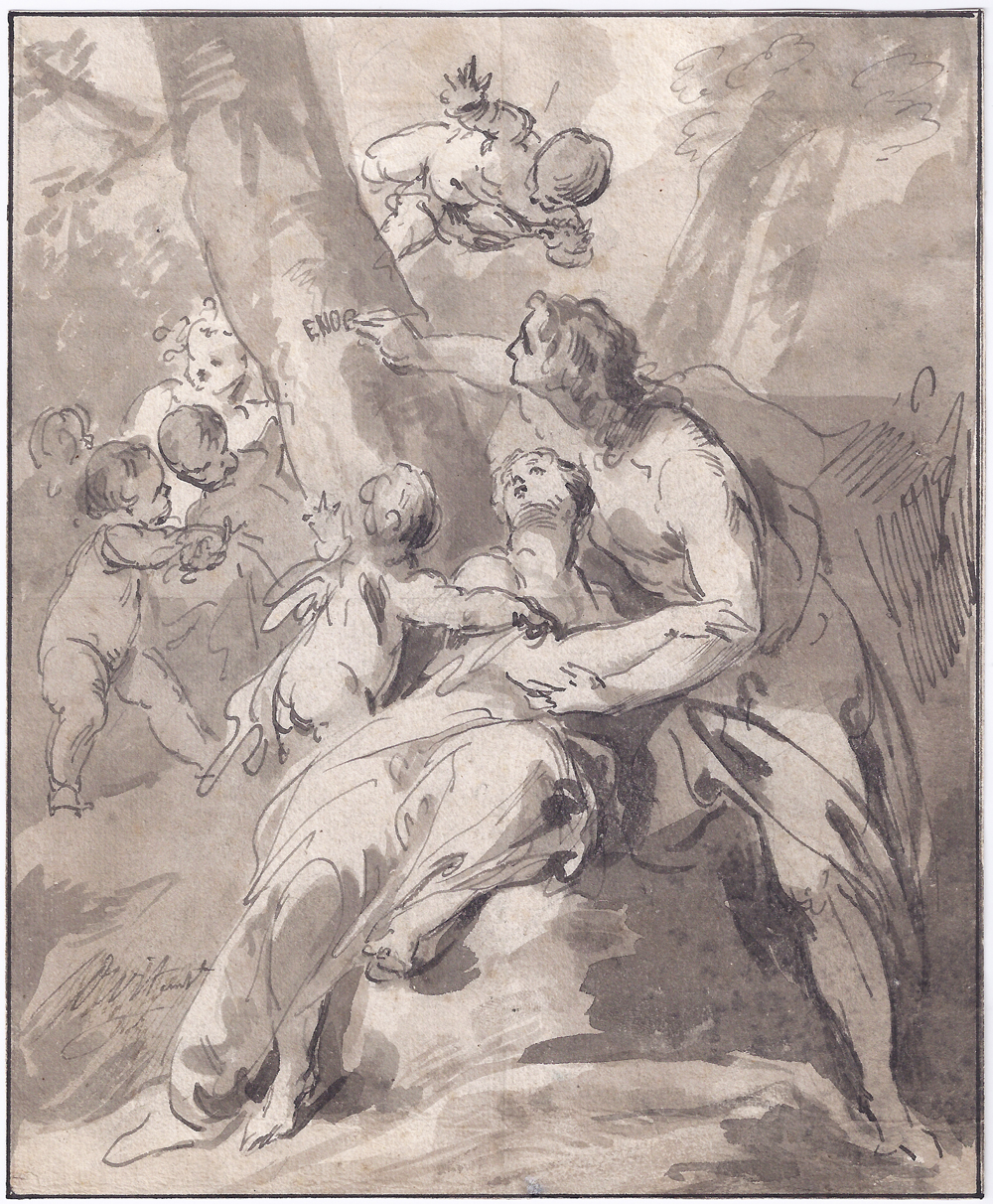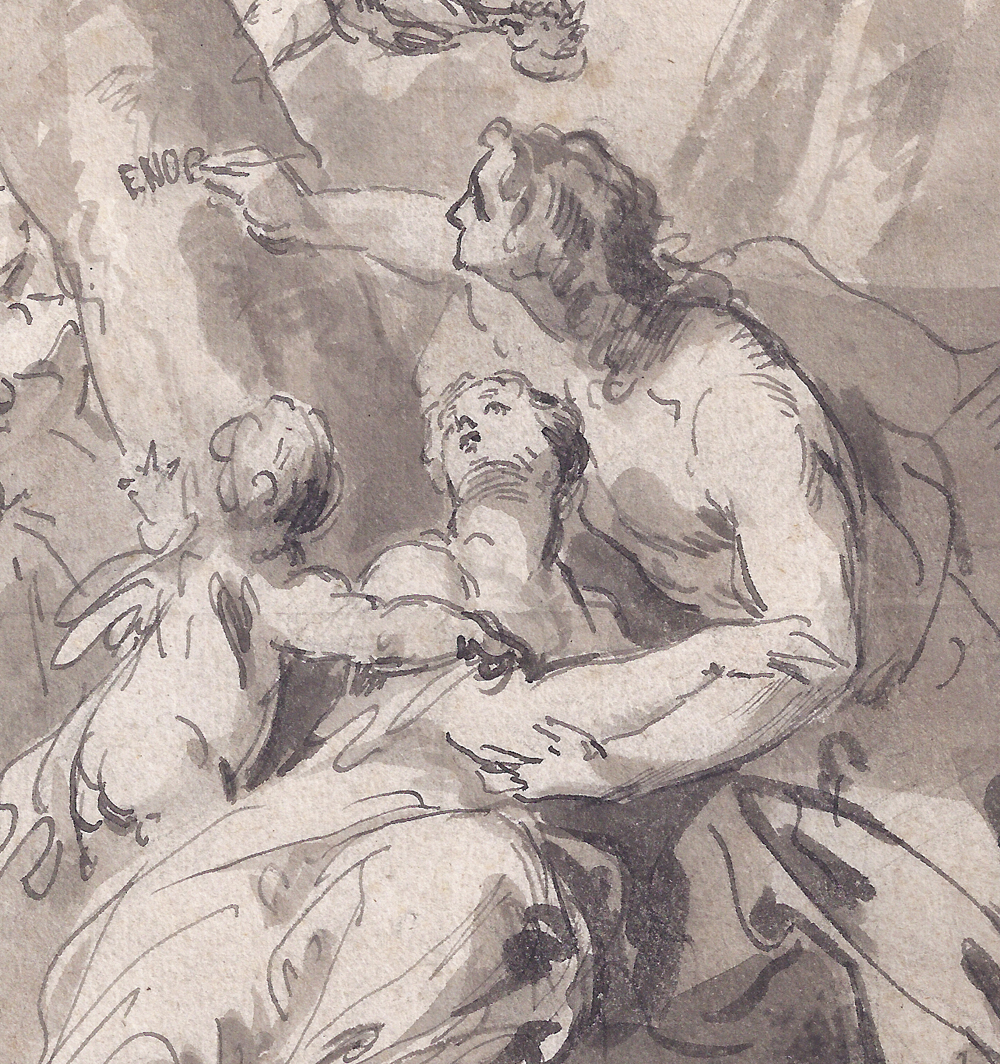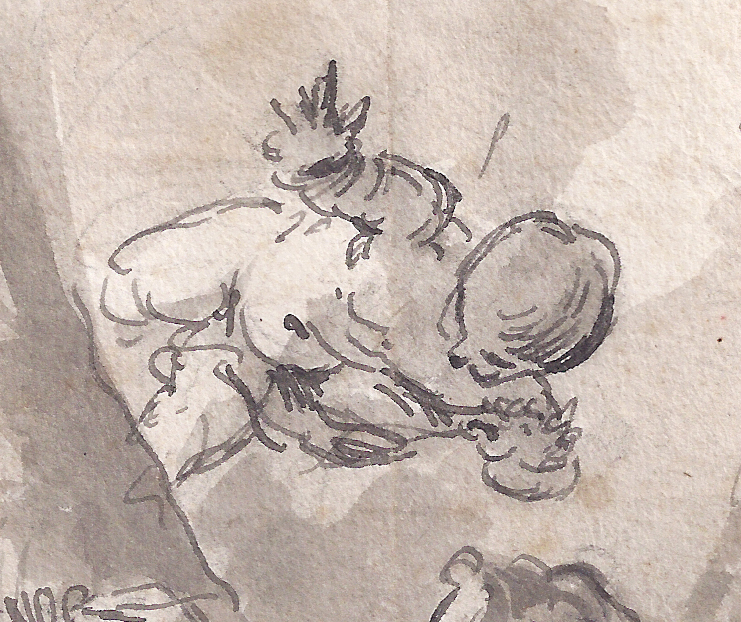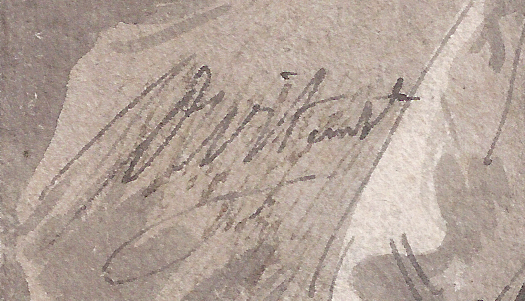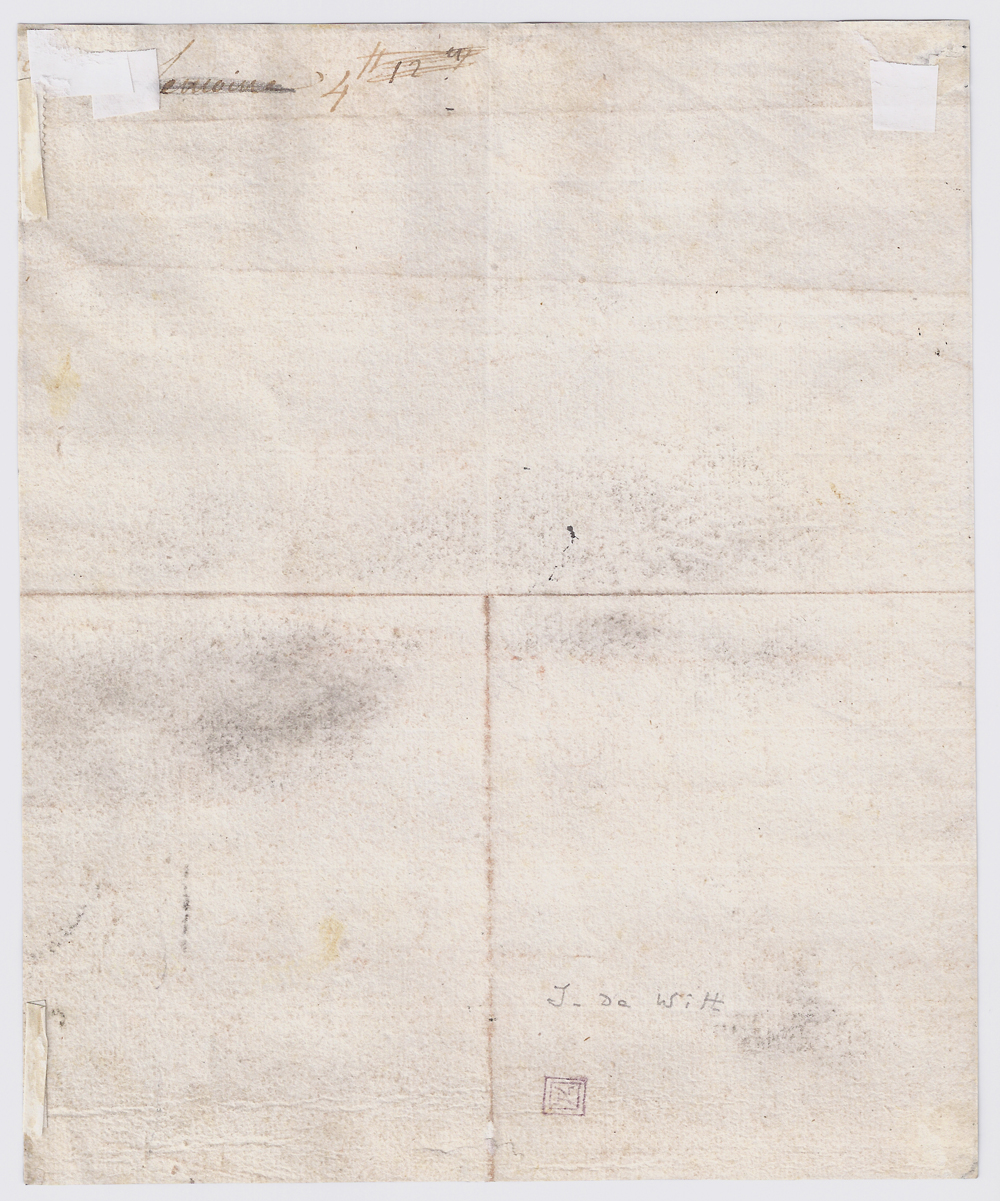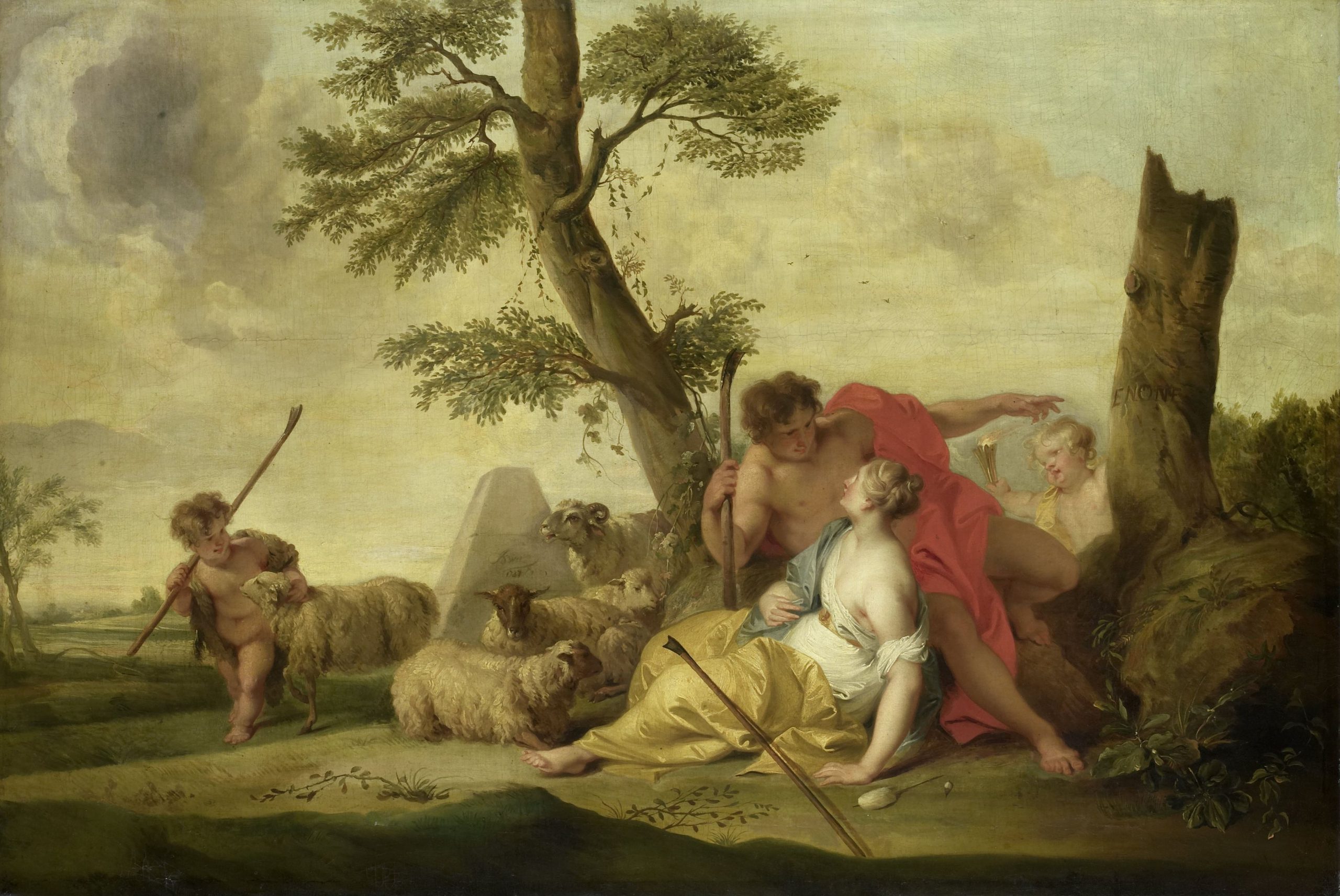JACOB DE WIT (Amsterdam 1695 – 1754 Amsterdam)
Jacob de Wit (Amsterdam 1695 – 1754 Amsterdam)
Paris and Oenone
Black chalk, pen and grey ink, grey wash, black ink framing lines, partial watermark shield with fleur-de-lys with letter W underneath, 208 x 171 mm (8.2 x 6.7 inch)
Signed ‘JdeWit’ (lower left) and inscribed ‘ENO’ (on the tree)
Provenance
~ Andries van der Groen (1715–1787), The Hague
~ His sale, Yver…Mulder, Amsterdam, 18-19 April 1788, Album 2, No. 28: ‘Jacob de Witt. Jupiter en Calisto en Paris & Oenone, in de manier van de voorgaande [fix met de pen en gewaschen]. (‘Jacob de Witt. Jupiter and Calisto and Paris and Oenone, in the manner of the last [powerfully with the pen and washed])’, to ‘Beyen’ for fl. 5 (together with No. 26)
~ J.C. Pruysenaar (died c. 1804), Amsterdam;
~ His sale, Amsterdam, Van der Schley … De Vries, 27 December 1814, Album S, No. 21: ‘Paris en Enone, in een Landschap, verzeld van Minnewichten. Met de pen, o.i. inkt en roet, door J. de Wit.’ (Paris and Oenone, in a landscape, accompanied by cupids. With the pen, East Indian ink and chalk, by J. de Wit) (to ‘De Vries’ for fl. 1,10, together with No. 22)
~ Alfred Normand (1910–1993), Paris (Lugt 153c, his mark applied on the verso)
~ Anonymous sale, Christie’s, London, 9 July 2002, lot 65
~ Private collection, USA, until 2014
***
Jacob de Wit was born in Amsterdam and received his early training when he was only nine years old from the painter Albert Spiers.1 At the age of thirteen he left for Antwerp to study with Jacob van Hall and became an admirer of Rubens. De Wit quickly developed into the leading decorative painter in Amsterdam. From 1717 on De Wit had so much work on his hands ‘that he scarcely knew were to begin’, according to the artist’s biographer Jacob van Gool in 1750. One of De Wit’s specialties were grisaille paintings, giving the illusion of marble reliefs. These grisailles are knowns as ‘Witjes’, after the artist to whom they had brought such fame. Many of the houses along the canals of Amsterdam are still adorned with ceiling paintings and wall panels by De Wit.
At the time of the Christie’s sale in 2002, the drawing was described as Angelica and Medoro. Dorine van Sasse van Ysselt correctly identified the subject as Paris and Oenone, and indeed the abbreviated name of the shepherdess is being written on the tree by Paris, ‘ENO’. The subject of the princely shepherd Paris and the shepherdess Oenone carving their names in a tree is taken from the fifth of Ovid’s Heroides, a scene from Paris’s youth on Mount Ida. Their courtship led to marriage, and a son, Corythus. Paris later abandoned her for Queen Helen of Sparta, which led to the Trojan War.
De Wit seems to have made another drawing of the subject, this time in colours, which is known from a reference in a 1771 sale catalogue.2 The subject must have particularly appealed to De Wit, as he also produced a painting of it in 1737, now in the Rijksmuseum, Amsterdam (fig.).3 Our drawing was possibly executed around the same period.
The drawing’s first documented owner, Andries van der Groen (1715–1787) was an artist in his own right, specialising in landscapes. He also executed stage-set decorations for the Nieuwe Schouwburg theatre in Amsterdam in 1774.
SOLD
1. For the artist, see: A. Staring, Jacob de Wit: 1695–1754, Amsterdam 1958, J. Huisken, Jacob de Wit: de Amsteltitiaan, Amsterdam 1986a and G. van den Hout and R. Schillemans, Putti en Cherubijntjes: het religieuze werk van Jacob de Wit (1695–1754), Haarlem/Amsterdam 1995-96.
2. Sale Jan Bisschop, Rotterdam, 24 June 1771, Album A, No 60: ‘Paris en Enone, uitvoerig, door Jacob de Wit. Gekleurd.’ (to ‘Van Duyselen’ for fl. 33,50) (Paris and Oenone, elaborate, by Jacob de Wit. Coloured).
3. Oil on canvas, 99.5 x 146.5 cm; inv. no. SK-C-1577; A. Staring, Jacob de Wit, Amsterdam 1958, p. 99, 150, fig. 111.
